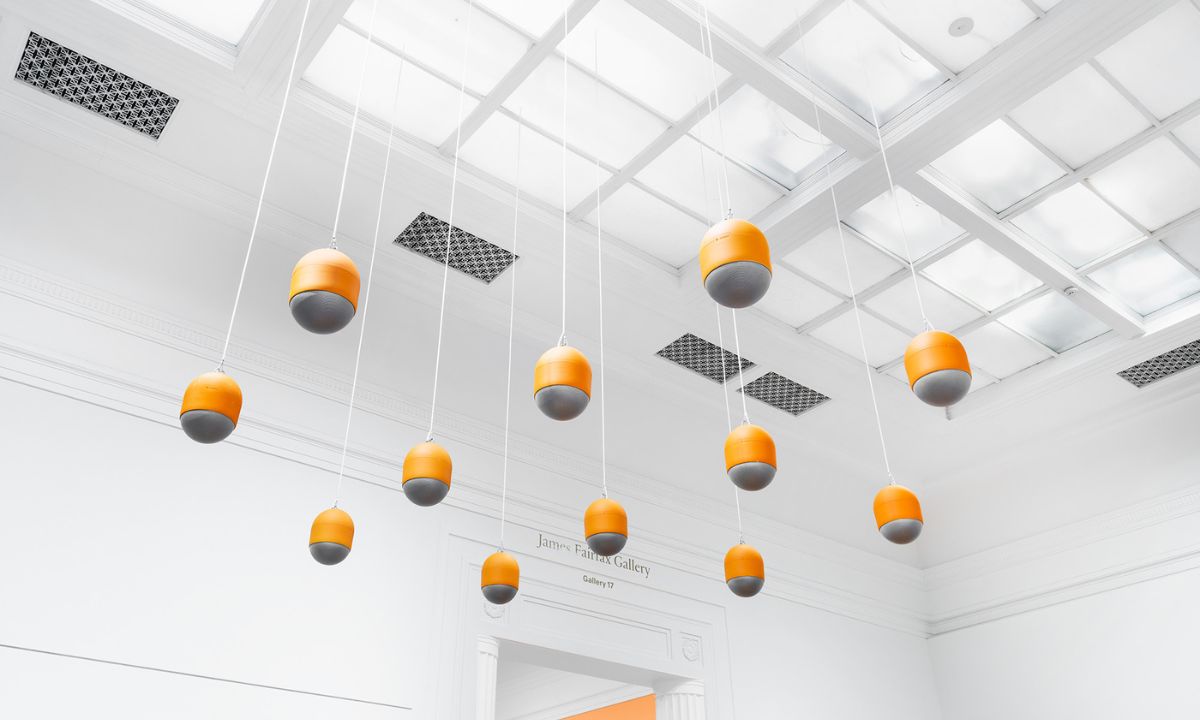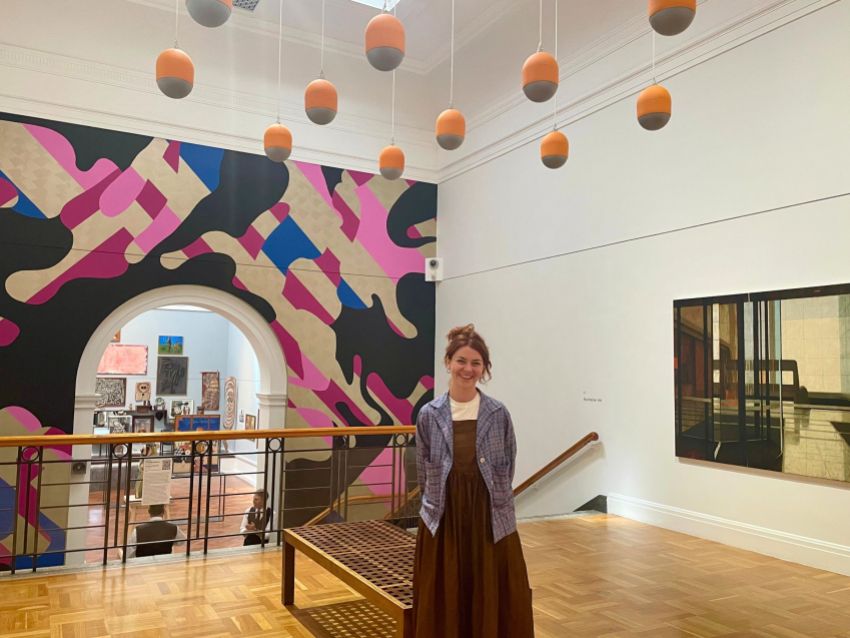‘This is how we love’ – a track written for Sydney's 2023 World Pride – echoes through AGSA as part of a Biennial exhibition, with Wiradjuri artist Jazz Money’s South Australian debut a display of queer joy.
Jazz Money has AGSA amplifying queer love
On level one of the Art Gallery of South Australia, 12 fabric sculptured pendant speakers hang from the ceiling, with one voice coming out of each.
The 12 voices sing “This is how we love” by Jazz Money in a stripped back version of what was originally sung by 400 voices in Sydney’s World Pride celebrations last year.
The song premiered at the Out & Loud & Proud international queer choir festival in February 2023, with lyrics by Jazz and music composed by Joe Twist. Now, the acapella version plays on loop at AGSA as part of their 18th Adelaide Biennial of Australian Art exhibition Inner Sanctum.
Speaking with CityMag under the chanting installation at AGSA, Jazz told us writing and hearing her song for World Pride was a transformative experience for her career.
“Poetry as a collective experience, as sharing breath and sharing that energy… I was really obsessed with how generous an act it was for everyone coming together,” Jazz says.
Jazz is a Wiradjuri person and multi-disciplinary artist, with poetry at the centre of her practice. Jazz worked with the curator of the Biennial, José Da Silva, to work out how to present the song physically and landed on the illuminated speakers.
“I think they’ve done an incredible job of making it look seamless, but it’s very hard to make something look seamless, particularly when there’s so many bits of wire and technology behind it,” Jazz says.

This is How We Love by Jazz Money, an installation in the Art Gallery of South Australia. This picture: Saul Steed
This is Jazz’s first time presenting work in South Australia, and they say they’re proud to show the power of the collective that makes the song shine.
“It’s this incredible thing, because I mean, they’re all beautiful singers I can say, but they’re not professional singers,” Jazz says.
“But when you have all of them together, it feels perfect, it sounds perfect. I think even with all the not traditionally perfect singing.”
The song is about the LGBTQIA+ community, and how the experiences of that community are rich and go beyond who you’re attracted to.
“The whole song is about decentering ideas about romantic relationships in queerness which is something that is obviously a really important part of how queer folk identify, but I think it is over-emphasised by people outside of the queer community as being the defining feature,” Jazz says.
“I think in my experience, queerness is actually really defined by a collective sense of care and a collective understanding and respect to see people as they want to be seen and to hear people as they want to be heard, and that’s what the lyrics are about, it’s about community.”

Jazz says pointing to those joyful aspects of the queer community is important to disrupt narratives of deficit often seen associated with queerness and Aboriginal identities.
“I think as a queer person and also as a black fella, these are communities that are so mythologised from the outside and so often defined by deficit or being less than, or being lacking, and that is just like not my experience at all, even remotely,” Jazz says.
“I couldn’t be happier to be a queer Aboriginal person, these are the best things about my life.
“There are really, awful, awful things that are affecting both those communities constantly but I think if we aren’t orienting towards joy, then we’re only ever fighting something that doesn’t define us… to me, that’s why emphasizing joy is actually a really radical act and I think its a form of protest in and among all the ways that we protest violence, settler colonialism and heteronormativity.”
Jazz says “This is how we love” is one of their first works that’s explicitly queer, and that it’s lovely to be able to reflect the values of queer and Aboriginal spaces that she occupies.
“All the work I make is inherently Indigenous, it’s inherently queer. But I guess, to be explicit about those things, I’ve realised that being explicit can be really inclusive and really invite people in,” she says.
“Writing poetry, you know, there’s a lot of subtext and there’s a lot of deep reading that goes on, but sometimes it’s nice to be quite literal.”
Jazz says while the meaning of the work is layered in these ways, people can enjoy it simply. There’s a bench positioned directly under the installation for people to sit and let the voices engulf them.
“I love that it’s enveloping … it’s such an introspective exhibition and I think an opportunity to just sit and bask in like such a joyous sound and such an inclusive sound is really – I think it makes people happy.”




